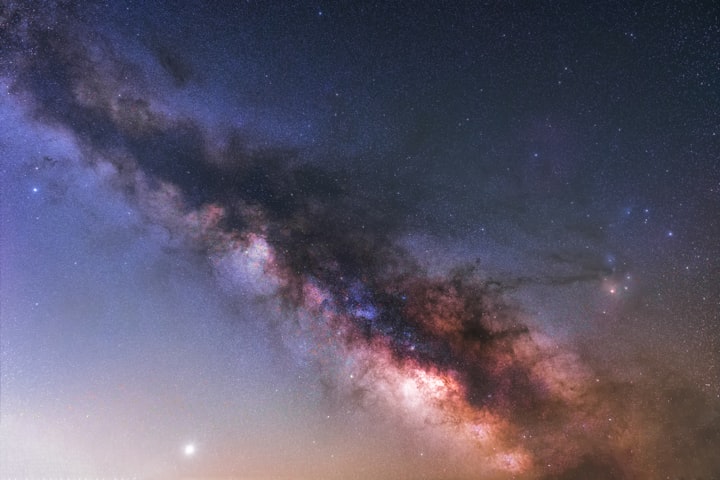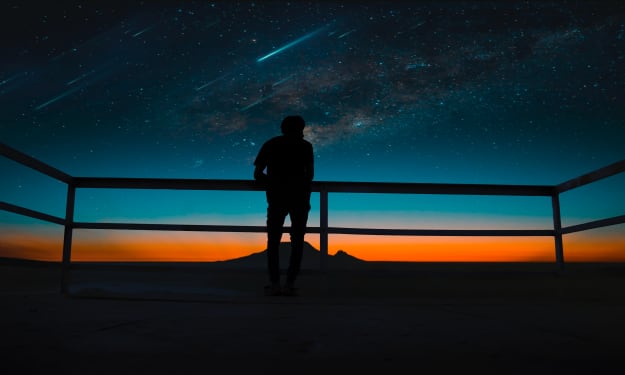CAN at least two planets ORBIT the same star in opposite DIRECTIONS?
Planets' opposite orbits will blow your mind!

In the vast, enigmatic realm of the universe, where the laws of physics blend with cosmic curiosity, there exists a captivating phenomenon that challenges our understanding of celestial bodies. Think about two planets, engaged in a mesmerizing cosmic ballet, orbiting the same star, but in opposite directions.
It's a mind-boggling concept that defies conventional wisdom and ignites the fires of curiosity. Can such a celestial spectacle truly exist? As we delve into the realms of astrophysics and cosmic mysteries, we'll embark on a thrilling journey to uncover the truth behind this paradoxical dance of the planets.
Our story begins with a star, the ultimate celestial beacon that reigns supreme in its corner of the cosmos. Around this radiant orb, planets come to life, each following an invisible thread of gravity, tracing their elliptical paths.
But what happens when two planets decide to waltz to the beat of their own cosmic drummers, moving in opposite directions? It's a question that has fascinated astronomers and stargazers for centuries, and the answer is a blend of science and celestial wonder.
The first thing to understand is that planets are like children of their parent star, bound by the gravitational pull that keeps them in check. In a typical planetary system, all planets follow a counterclockwise path, in sync with the rotation of their host star.
This is the conventional cosmic choreography that has become the norm in the vast majority of star systems. But the universe, ever the master of surprises, isn't bound by our expectations.
In rare instances, the cosmos decides to break the rules, throwing in a twist that keeps astronomers wide-eyed and astrophysicists scratching their heads. These enigmatic worlds, called "retrograde planets," dare to defy the cosmic order.
Instead of obediently following the stellar flow, they choose to journey in the opposite direction, making their orbits a captivating cosmic spectacle.
Imagine standing on the surface of one of these retrograde planets, gazing up at your host star. Instead of witnessing the familiar procession of sunrises and sunsets, you'd see a dazzling display where the sun rises in the west and sets in the east, a complete reversal of the celestial norm.
It's a mind-bending experience that could leave even the most seasoned astronomers pondering the mysteries of the cosmos.
But how do these celestial rebels come into existence? What cosmic forces are at play to allow them to traverse their orbits in such a counterintuitive manner? To answer these questions, we must dive into the depths of astrophysical wizardry.
One plausible explanation for the existence of retrograde planets lies in the tumultuous early years of a star system's formation. During the chaotic dance of planetary birth, collisions, and gravitational interactions, some planets may find themselves caught in a cosmic tug-of-war.
Imagine two planets vying for the same orbital space, their gravitational forces battling for dominance. In such a cosmic standoff, one planet could be flung into a retrograde orbit while the other continues along its normal path. It's a cosmic game of chance that leads to the creation of these cosmic oddities.
Think of it as a celestial coin toss, where one planet emerges as the head and the other as the tail. The coin, in this case, is the fate of the planetary system, determined by the laws of physics and the gravitational forces at play. This captivating cosmic roulette is a testament to the unpredictable nature of the universe, where chaos and order coexist in a delicate balance.
Retrograde planets, though rare, have been discovered in our own Milky Way galaxy. One such example is Neptune's moon, Triton, which defies convention by orbiting the planet in a retrograde fashion.
Triton's backward dance is believed to be the result of a cosmic capture, where it was snatched by Neptune's gravity from its original path and forced into a retrograde orbit. This captivating moon serves as a reminder that even in our own celestial neighborhood, the universe continues to surprise us.
But what about the possibility of two planets orbiting the same star in opposite directions? Is this an occurrence that can truly transpire, or is it a cosmic feat that remains out of reach? The answer lies in the delicate balance of celestial forces and the intricate dance of gravitational interactions.
In theory, it is possible for two planets to share the same star while orbiting in opposite directions. However, the chances of such a celestial spectacle occurring are exceedingly slim. To understand why, we must consider the intricate dynamics of planetary systems.
When two planets share the same star, they are influenced not only by the star's gravitational pull but also by each other's gravitational forces. These interactions can lead to orbital instability, as the planets' gravitational tugs may push and pull on each other, disrupting their orbits.
In most cases, this gravitational jostling results in one planet being flung out of the system or into a different orbit, leaving behind a solitary planet to continue its dance with the star.
So, while the idea of two planets orbiting the same star in opposite directions is not a scientific impossibility, it remains an extremely improbable occurrence. The cosmic forces at play tend to favor the orderliness of counterclockwise orbits, relegating the reverse dance to the realm of rare celestial anomalies.
In the grand tapestry of the cosmos, the existence of retrograde planets and the possibility of planets orbiting stars in opposite directions add an element of intrigue and suspense.
These cosmic oddities remind us that the universe is not bound by our expectations or the rules we impose upon it. It is a realm of infinite possibilities and mysteries waiting to be unraveled by those who dare to gaze upon the night sky with wonder and curiosity.
As we ponder the enigmatic dance of planets in retrograde and the tantalizing possibility of opposing orbits, we are reminded that the universe is a stage where celestial dramas unfold, captivating our imaginations and challenging our understanding of the cosmos.
It is a place where science and creativity converge, where the ordinary gives way to the extraordinary, and where the cosmic dance of contradictions continues to inspire awe and wonder in the hearts and minds of stargazers everywhere.
About the Creator
Yusuf Alam
Crafting Words into Amazing Stories | Freelance Copywriter | Turning Ideas into Impact






Comments (1)
Wow! I love orbits and stars! Anything is possible 🩷💙♥️🐲